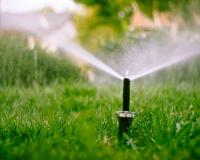
Vibrant Environment
Governance And Rule Of Law
All | Biodiversity | Climate Change and Sustainability | Environmental Justice | Governance and Rule of Law | Land Use and Natural Resources | Oceans and Coasts | Pollution Control

Section 401 of the Clean Water Act provides that federal licenses and permits authorizing activities that include a point source discharge to the waters of the United States may only be granted after affected states have had an opportunity to review the activity and to certify that it will not cause a violation of state water quality standards. States (and some tribes with “treatment as a state”) have authority to grant or waive certification, to deny it, or to grant it subject to conditions.

On February 3, President Trump signed an Executive Order entitled A Plan for Establishing a United States Sovereign Wealth Fund. The Order directs the Secretary of the Treasury and Secretary of Commerce to develop a plan within 90 days addressing the creation of such a fund, including funding mechanisms, investment strategies, fund structure, and a governance model.

On January 20, President Donald J. Trump signed an Executive Order entitled Unleashing American Energy. Section 5(a) of the new order revokes President Jimmy Carter’s 1977 Executive Order 11991, which directed and empowered the Council on Environmental Quality (CEQ) to adopt regulations implementing the National Environmental Policy Act (NEPA).

The upcoming change in the U.S. presidential administration, with its threat of tariffs and mass deportation of immigrant communities, has put more attention on the country’s southern border. Despite these and other tensions concerning the U.S.-Mexico border, Mexico and the United States continue to work together to negotiate new approaches and compromises to manage shared water resources sustainably, even as climate change and drought have reduced those supplies.

In June of this year, Louisiana enacted a law governing the gathering of air pollution data by community-based organizations. Similar legislation has been introduced (but not adopted) in West Virginia and may be proposed in other states. While proponents argue they are simply ensuring only the best data is used, the Louisiana law undermines valid community efforts to understand an

On November 12, the U.S. Court of the Appeals for the D.C. Circuit shattered the implementation framework of one of the nation’s foundational environmental laws, the National Environmental Policy Act (NEPA). In a 2-1 decision in Marin Audubon v.

On June 20, 2024, four days before the case was set to go to trial, Hawaiʻi’s First Circuit Court approved a landmark settlement that resolved claims brought by thirteen Hawaiʻian youth plaintiffs against Hawaiʻi’s Department of Transportation (HDOT) and other defendants, including the department director and Governor. That case, Navahine F. v.

Today’s Supreme Court is, to borrow a phrase from a recent discussion, reshaping American life. It’s doing so across numerous areas of law, prompting commentators, professionals, and everyday citizens to adapt to a rapidly evolving legal landscape.

World Water Day is an annual event celebrated on March 22nd, dedicated to raising awareness about the importance of freshwater and advocating for the sustainable management of water resources worldwide. In the face of escalating water crises and environmental degradation, the call for innovative solutions to ensure sustainable water management has never been more urgent.

Although water covers 70% of the earth’s surface, only 1 percent is available for human use. While freshwater supplies remain relatively finite, demand for water in the United States has tripled over the past 50 years.